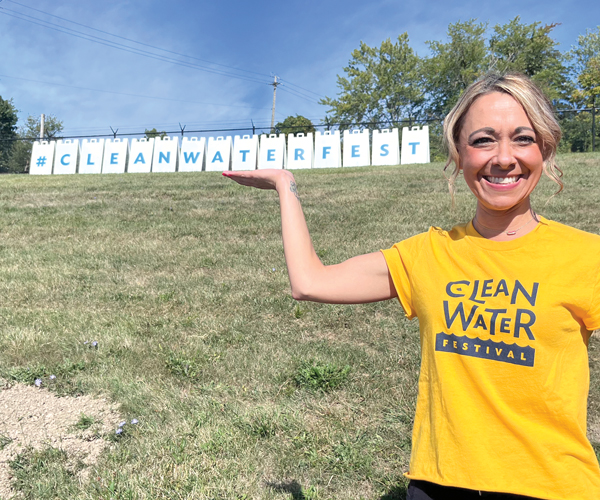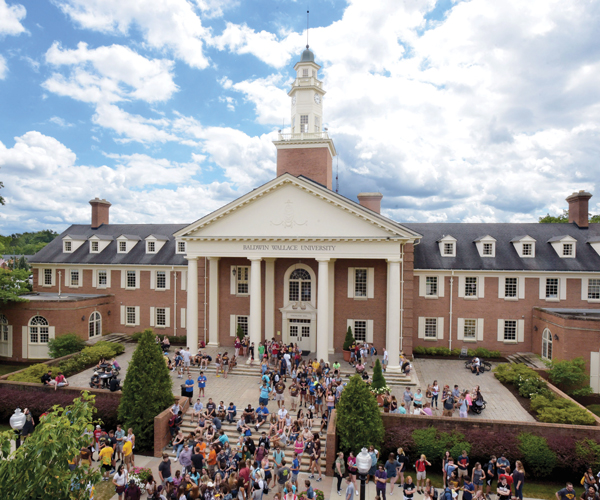When it comes to Northeast Ohio, our environmental tale comes with a taste of irony. The region that gave us the burning Cuyahoga River and caused the creation of the Environmental Protection Agency (EPA) and Clean Water Act has now evolved into one of the leading regions in the nation for biomimicry.
If you read the previous article on biomimicry, the model of using a nonprofit as a conduit to fund education and research, which then becomes a product or process that creates a profit for business, is unique. It’s a natural evolution of environmentalism that has morphed beyond stewardship and sustainability into a more profitable paradigm. We have great organizations in Northeast Ohio that lead through example, using environmental stewardship and ecology to consistently improve our quality of life and the success of our commerce.
“The thing that really sets our region apart is that we have an abundant supply of clean fresh water,” says Kyle Dreyfuss-Wells, CEO of the Northeast Ohio Regional Sewer District (NEORSD). “We play an essential role in maintaining that abundant supply of water, which in turn improves our quality of life and in making Northeast Ohio a place where visitors and businesses want to come and stay. We maintain the stormwater and wastewater infrastructure, which is the foundation upon which a quality of life can be built.
“Northeast Ohio is the place where the river once caught fire. Today we have not only rebounded completely from that but have also learned a lot along the way.”
And it’s not just about making sure water is clean, as the NEORSD does with its participation in major ecological initiatives like Project Clean Lake, but also in how it sets an example for other businesses when it comes to building sustainable energy systems to reduce a carbon footprint.
“That’s why Marie (Fechik-Kirk) and her team have the freedom to look across our entire organization in terms of our sustainability programs,” says Dreyfuss-Wells. “We use huge amounts of electricity as well as huge amounts of chemicals. And we have a very complex organization. Marie and her team look across our entire organization to create efficiencies. And we are well coordinated with other big infrastructure agencies in our area in terms of our approach to sustainability.”
“Measuring and monitoring our greenhouse gas emissions in terms of our electricity usage is important, of course,” says Fechik-Kirk, who is manager of Sustainability and Special Projects at the NEORSD.
And while the amount of water filtered and treated has grown, improved efficiencies have actually lowered the amount of greenhouse gas emissions generated by the NEORSD, says Fechik-Kirk.
As you may have already guessed, the other notable environmental steward in the Greater Cleveland area is the Cleveland Metroparks. Encompassing more than 25,000 acres across 18 reservations and 325 miles of trails, the Cleveland Metroparks are home to numerous environments that house unique species, some of which are still unknown to naturalists.
With a management philosophy based on an ecosystem approach to natural resource management, the Cleveland Metroparks manages the land and water while protecting native plants and animals — some of which may hold either the chemicals or inherent biological design that may benefit all of humankind.
Some of those ecosystem management techniques may be a prescribed fire or brush hog mowing to mimic natural disturbances that create and sustain specific habitats for animals like blue-winged warblers, indigo buntings and numerous butterflies found in our meadows. Other management tools are used to enhance, restore or recreate wetlands and streams that are important breeding and foraging habitats for amphibians, reptiles, birds and insects. There are also ongoing programs to protect our ecosystems from invasive species of both plants and animals, which may hasten the extinction of native species.
The Metroparks also has been recognized nationally for its ecological stewardship and conservation efforts, but also for its operating efficiencies, being recognized by the EPA in 2022 with an Encouraging Environmental Excellence Platinum Award. To win the award, a business or organization must expand its environmental and sustainability programs beyond its facilities and demonstrate that its environmental stewardship efforts benefit not only the local community but the entire region or geographic area.
“Our focus areas are energy efficiency and conservation,” says Rosalina Fini, chief legal and ethics officer who is also co-chair of the Metroparks’ Eco Team, which is responsible for coordination of sustainability efforts. “But we are also focused on water quality and conservation as well as
stormwater management.”
As one of the largest catch basins in Northeast Ohio, the Metroparks often work with the NEORSD on collaborative projects.
Since 2010, Cleveland Metroparks has acquired nearly 3,892.11 acres of quality wetlands, streams and forests. With a border to Lake Erie, Cleveland Metroparks realizes the importance of urban watersheds. Stormwater, pollution, algal blooms, invasive species and loss of wetlands pose continuing challenges, and the Park District has received national attention for making watershed stewardship a priority through education, scientific monitoring and environmental restoration. As a result of these efforts, Cleveland Metroparks has lowered regional stormwater management costs by over $8.09 million annually.
“The passage of the Inflation Reduction Act also has provided an excellent opportunity for us to make significant progress, especially when it comes to clean energy,” says Fini. “For the first time, government entities can take advantage of a program that helps us recover some of the costs of sustainability programs, like the installation of solar panels to produce energy.
“We are just finishing a feasibility study on the installation of solar panels in some of our facilities that use the most electricity to see how much we can reduce our carbon footprint, but also whether or not we are making prudent financial decisions.”
Prudent financial decisions are also important to the ecological mission of any organization. Maintaining a balance between what is good for the environment and what is good for business is always important, or the program becomes self-defeating and impractical.
The Lake Erie Foundation is an example of a nonprofit that promotes a green agenda while keeping an eye toward the business practicality of enforcing environmental initiatives. It’s a great example of how a nonprofit ecological organization can work with for-profit businesses.
“I basically work with scientists from The Ohio State University as well as legislatures and government agencies on three basic initiatives,” says Matt Fisher, vice president of the Lake Erie Foundation (LEF). “We have been very supportive of efforts to reduce our algal bloom by reducing phosphorus runoff from farming operations. But at the same time, we realize that we have to work within the parameters that keep farmers viable.
“We are also supportive of trying to reduce the amount of plastics in the water and generally supportive of other green initiatives, but we are not an activist organization.”
For instance, the LEF does not support the installation of wind turbines on Lake Erie without further study, says Fisher.
“Many people look at us as an environmental organization, which we are, and we support green energy,” says Fisher. “But we really don’t know how many birds might migrate through the windmills’ pathway, or how the cables running from the windmills impact the pollution of the central basin and how that might ultimately impact fish. We need to study even more green projects to see how they impact our environment or lifestyle.
“We are formed with people who have business backgrounds, or people who have actual businesses along Lake Erie,” adds Fisher, “which really makes us a green organization that promotes sustainability and the environment with an eye toward business practicality.”
This is the kind of partnership between the nonprofits, companies, schools and government organizations involved in the emerging science of biomimicry.




